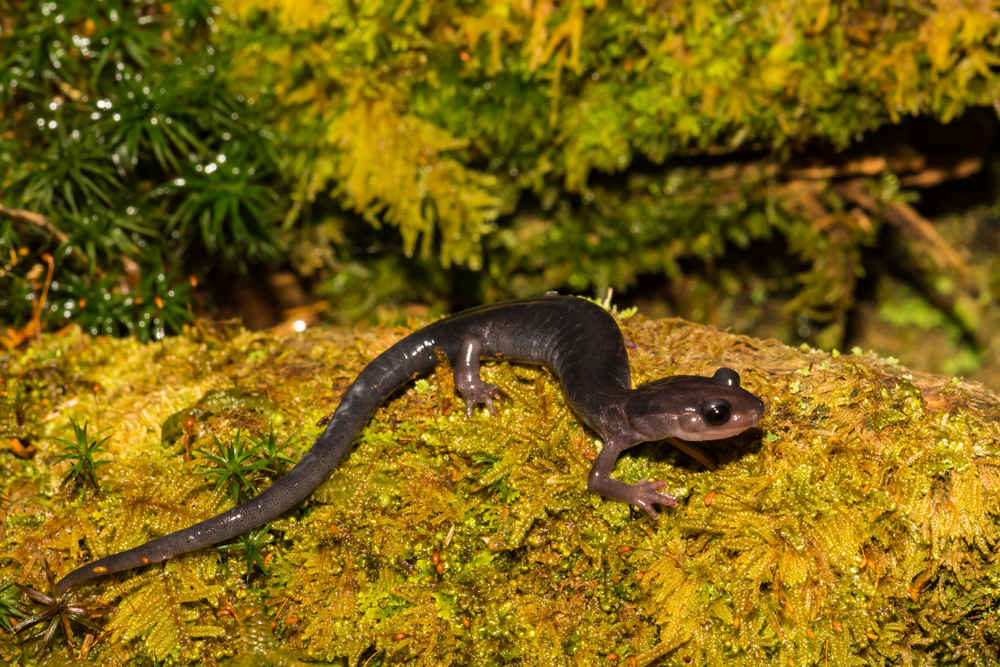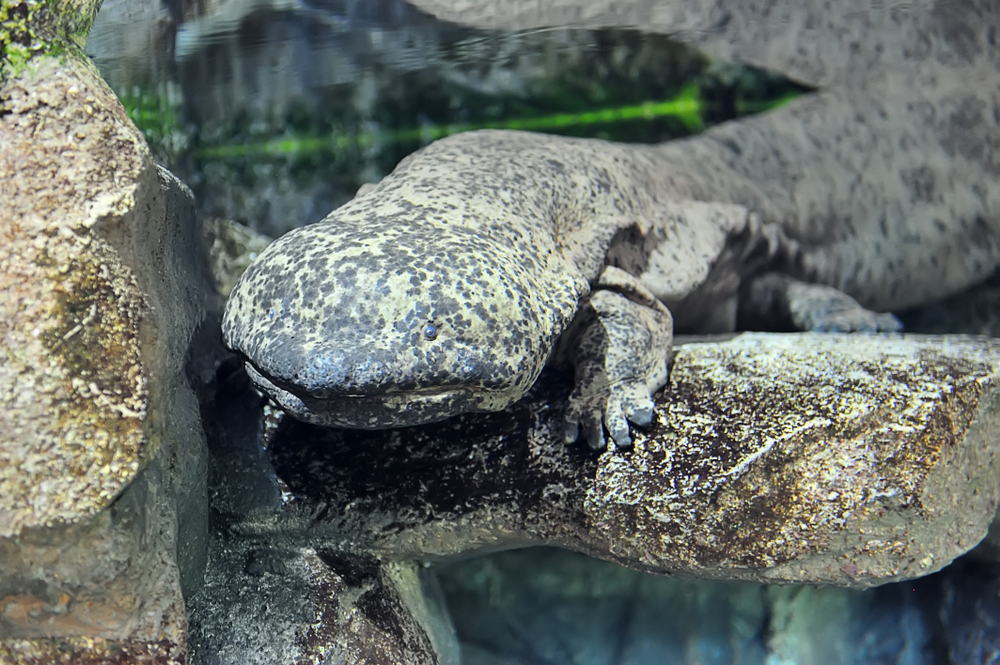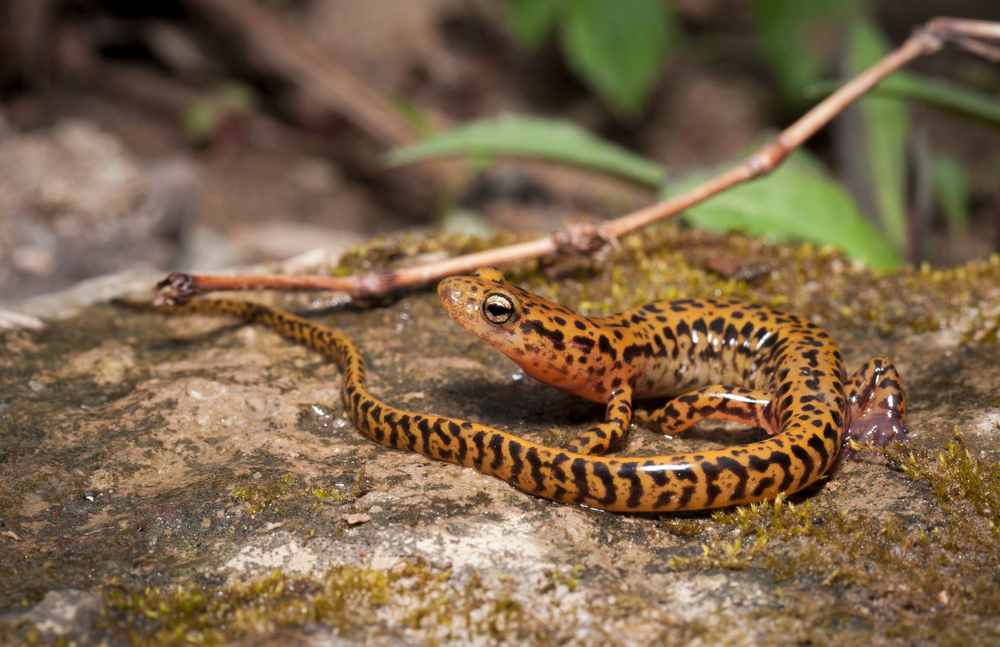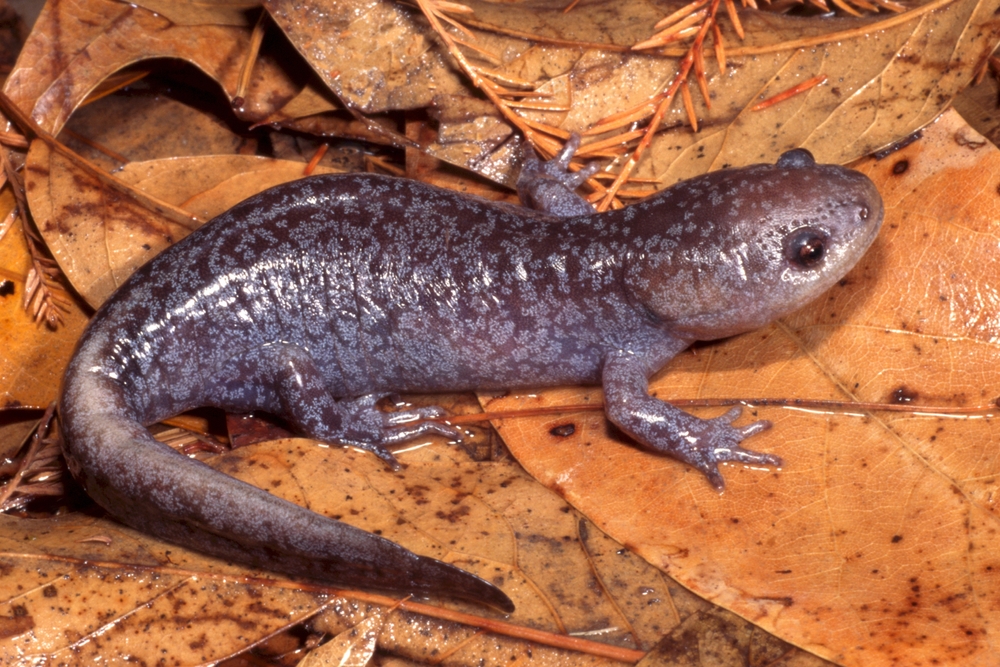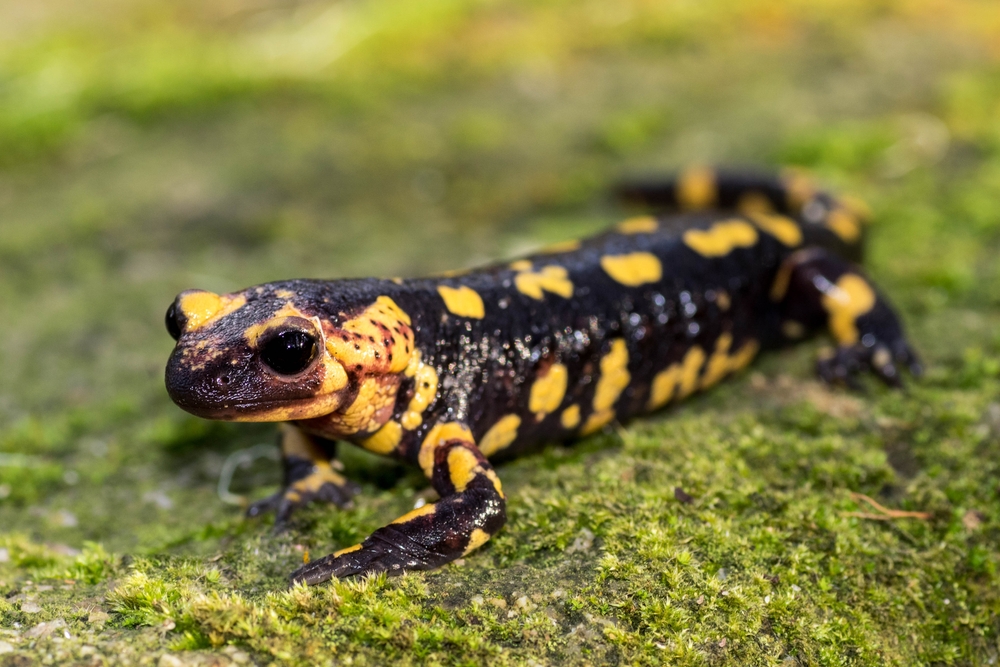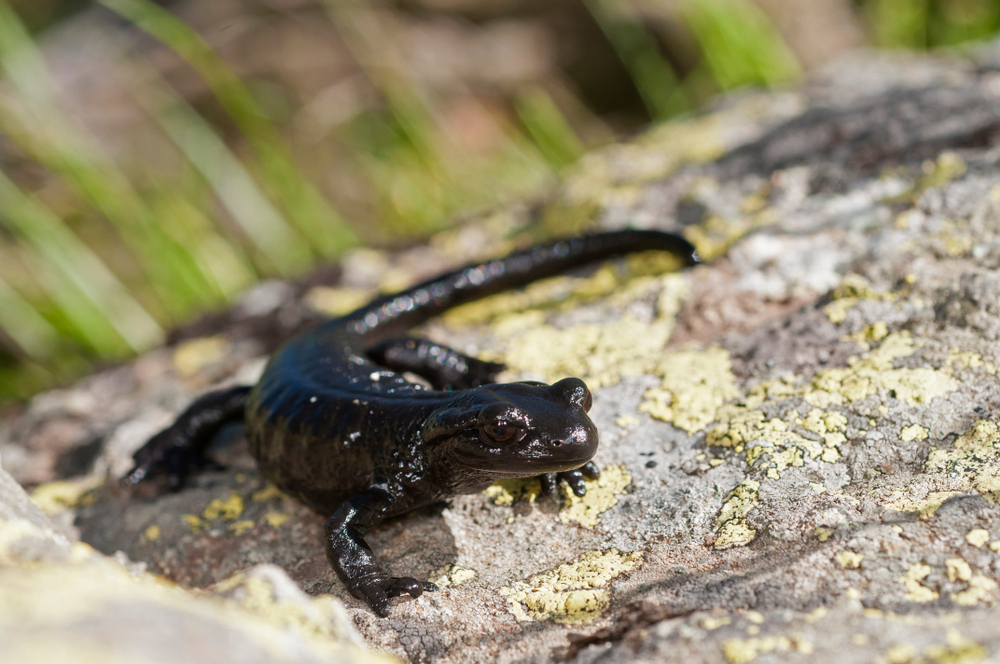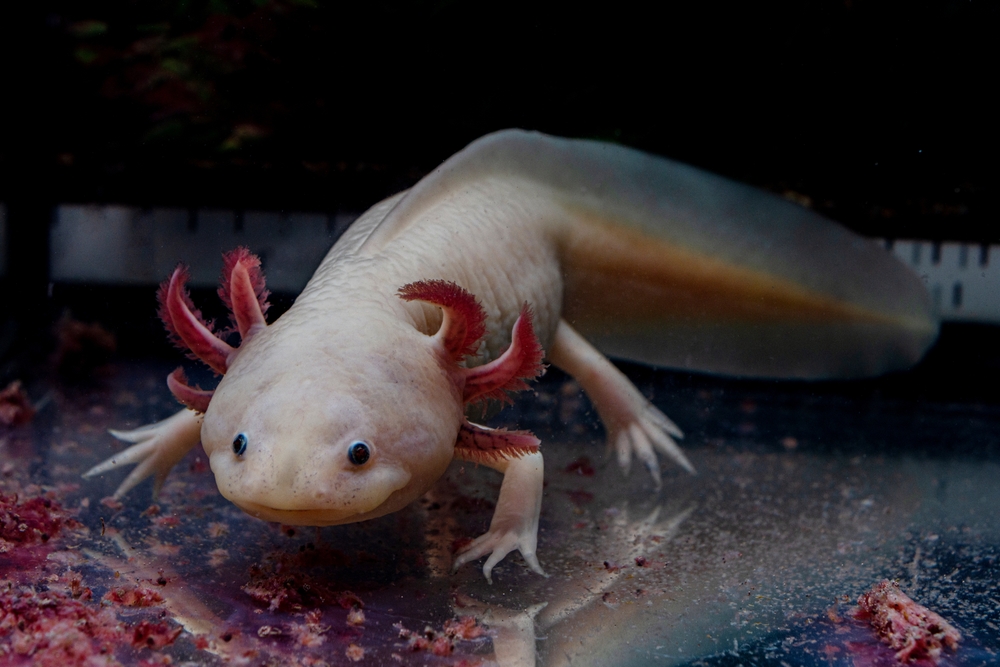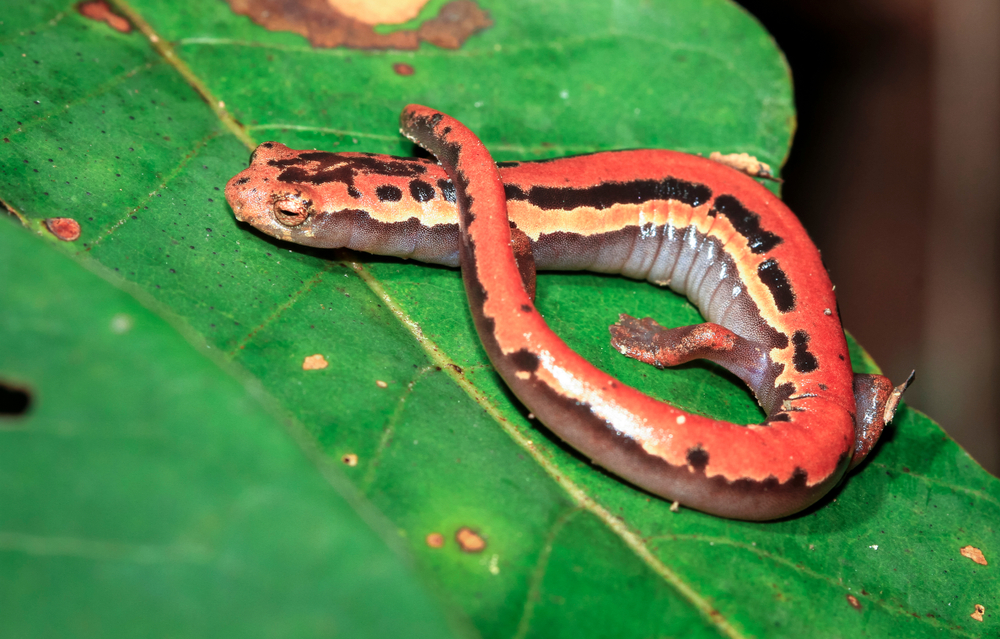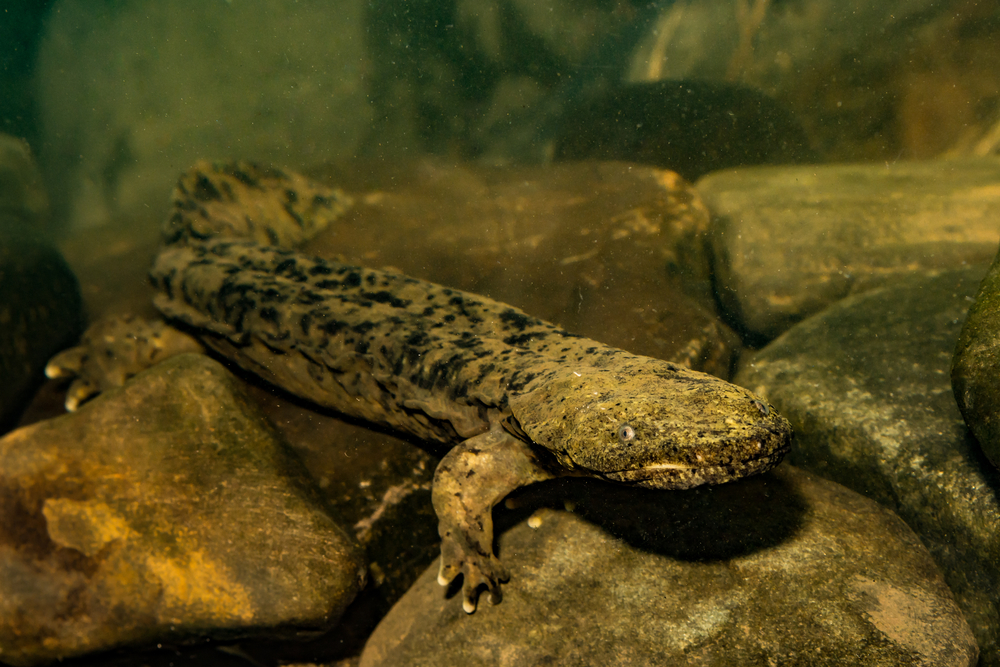Uniqueness
Distinctive Gray Facial Markings:
The Northern Grey-cheeked Salamander (Plethodon montanus) is named for its pale gray or silvery cheeks, which contrast with its otherwise dark brown or black body. This subtle but consistent marking distinguishes it from other small, dark salamanders in the Appalachian region, including its close cousin, the Southern Grey-cheeked Salamander (P. metcalfi).
Fully Terrestrial and Lungless:
Like other members of the Plethodontidae family, P. montanus is lungless, relying entirely on its moist skin and the lining of its mouth for respiration. It is also completely terrestrial, spending its entire life cycle—egg, juvenile, and adult—on land, with no aquatic larval stage.
Direct Development:
This species practices direct development, meaning the eggs hatch into fully formed miniature adults without a free-swimming larval phase. This adaptation allows P. montanus to reproduce entirely in moist terrestrial microhabitats, such as beneath logs or moss, eliminating the need for aquatic breeding sites.
Microhabitat Specialization in High-Elevation Forests:
Plethodon montanus is endemic to the cool, moist forests of the southern Appalachian Mountains, typically found at elevations above 3,000 feet. It thrives in deep leaf litter, under mossy rocks, or within rotting logs, relying on consistently humid environments. This high-elevation specialization makes it highly sensitive to climate change and habitat fragmentation.
Cryptic and Territorial Behavior:
Although rarely seen, P. montanus is believed to be territorial, defending small home ranges within the forest floor. It may use chemical cues and scent marking to navigate and communicate—common traits in plethodontids but less studied in this elusive species.
Conservation Sensitivity:
Due to its restricted range, dependence on microclimatic humidity, and vulnerability to drying and warming trends, the Northern Grey-cheeked Salamander is considered a species of conservation concern. Even subtle shifts in forest canopy cover, soil moisture, or temperature can impact its survival.
Summary:
The Northern Grey-cheeked Salamander is a high-elevation specialist with a suite of unique adaptations: gray facial markings, lungless respiration, direct terrestrial development, and a strong dependence on cool, moist Appalachian forests. These features make it both biologically distinctive and an important bioindicator for the health of mountain forest ecosystems.



































































